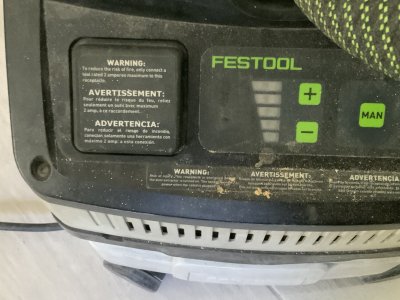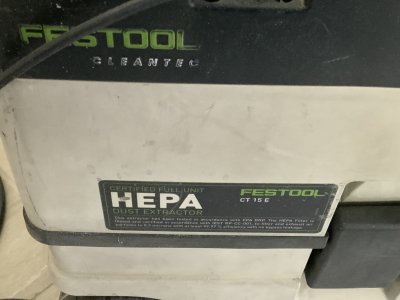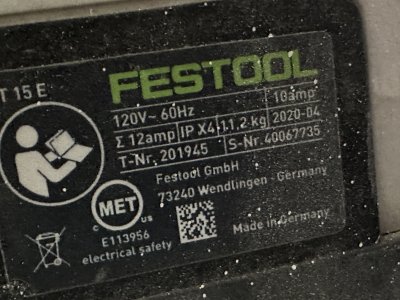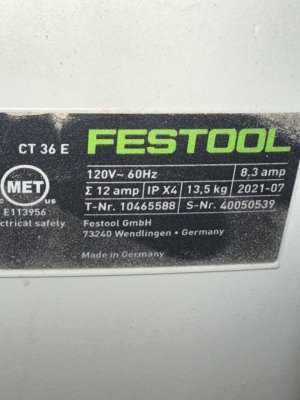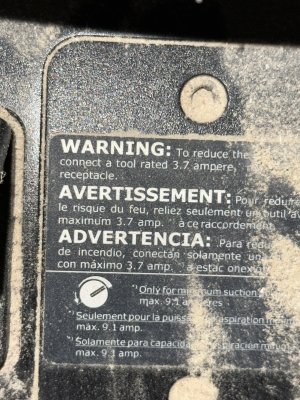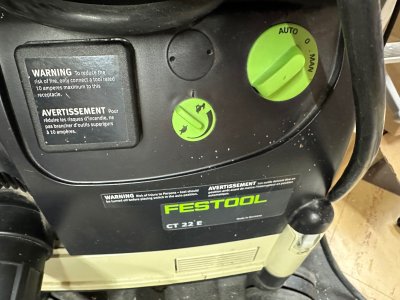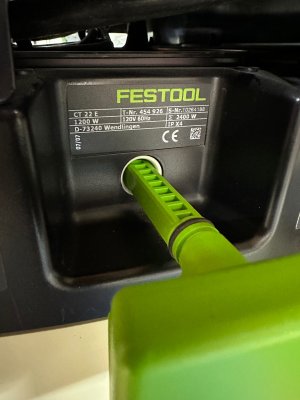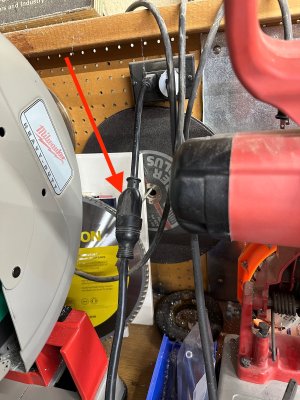Your label, with the sigma 12A has a max continuous motor load of 8.3A. Hence the remaining that the receptacle is rated for 'continuous load' according to NEC is 3.7A. There are other models out there throughout the years apparently that have 9A and 10A, hence why we can get down to 2A. Yes, it's a math function, but the NEC 80% rule applies to the END rating, not that receptacle.
Like I've mentioned before, which you've conveniently ignored, the built-in receptacle is governed by the thermal load and the circuit trace's maximum current allowance. From a legal perspective Festool technically only has to build to 2A, 3.7A or whatever is listed. They have however, typically likely overbuilt enough for transient and continuous load (as governed by min suction power) but that's not going to be ever listed, and it is just assumed that they do - hence why we can run our 2200 and TS on that socket for intermittent cuts.
Arguing that it's just a math function is ignoring the realities of circuit and power design. You imply that one can plug in 15A and be fine. You're plugging in far less than that when using Festool tools - unless you impart a high load on the motor, then it will achieve it's max rating. At which point, either the circuit is thermally cut off, fried, or the house 15A circuit breaker is tripped. Even Festool correspondence advises to split the connection if one's going to be doing that sort of loading.
I'm just going to step away from this because if this last post won't educate you away from just saying 'It's a SIGMA hence it's just math" then I concede that you win the internet.
**signing off as I won't bother coming back to the site for a while as you've managed to trip my circuit breaker

